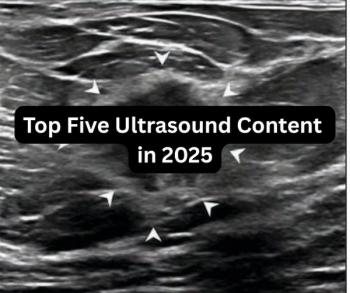
ECRI: MR scanners demonstrate comparable image quality
The June 2006 edition of the Health Devices journal by ECRI, an independent nonprofit health services research agency, contains an in-depth evaluation of 1.5T MR systems. The evaluation included GE’s Signa HD 1.5T, Siemens’ Magnetom Avanto, and Toshiba’s Vantage (the other major supplier of 1.5T systems, Philips, declined the invitation).
The June 2006 edition of the Health Devices journal by ECRI, an independent nonprofit health services research agency, contains an in-depth evaluation of 1.5T MR systems. The evaluation included GE's Signa HD 1.5T, Siemens' Magnetom Avanto, and Toshiba's Vantage (the other major supplier of 1.5T systems, Philips, declined the invitation).
A common feature of all the evaluations is that ECRI judges the products based on their clinical and technical acceptability and desirability. Typically, ECRI allocates different ratings to each product for different scenarios. In the MR evaluation, it rated the systems for two different uses: inpatient and outpatient imaging.
For inpatient facilities, which are likely to have less responsive patients and to treat more complex medical problems, the most important purchase considerations will be patient positioning features, advanced imaging capabilities, and system integration. For outpatient facilities, the ability to perform routine exams efficiently and comfortably will be most important.
ECRI also provided separate ratings for each system's ability to meet the needs of three specialized applications: breast imaging, cardiac imaging, and functional MRI.
To evaluate the systems, ECRI assessed the underlying image quality with phantom measurements, asked manufacturers to demonstrate the features that they felt differentiated them from their competitors, and surveyed users regarding their experiences, both good and bad. ECRI discussed the findings in detail, in particular, advantages and disadvantages for each system.
Overall, ECRI found that all the systems provide comparable baseline image quality but did find some differences in the areas of parallel imaging, advanced clinical applications, and patient comfort.
For example, ECRI found that GE's Signa HD is easy to use, particularly when considering some of the more complex clinical applications, and had the widest selection of coils available. However, the number of coils that can exploit the full advantages of the multiple channels now available is very limited.
The Siemens Avanto was the first system to be equipped with the Tim technology. Tim is the Siemens approach to using multiple channels more effectively. ECRI found that Tim is very easy to use and reduces some of the normal limitations often encountered with parallel imaging. However, at 1.5T, some restrictions still remain.
The Toshiba Vantage delivers good image quality, particularly when considering fat saturation, with a relatively short bore. It is a good choice for routine imaging applications. However, some the software for some of the more complex studies is not as well developed as its competitors.
These differences led to different ratings (either Preferred or Acceptable) for the different scenarios described.
In addition to the evaluation, ECRI provided descriptions of the systems, particularly any unique features. It also discussed the importance of the specifications used to describe MR systems and provided guidance in how to interpret them. ECRI illustrated the discussion with comparative charts containing manufacturer-verified specification data for each of the systems evaluated.
To learn more about this issue of Health Devices, visit
Newsletter
Stay at the forefront of radiology with the Diagnostic Imaging newsletter, delivering the latest news, clinical insights, and imaging advancements for today’s radiologists.




























